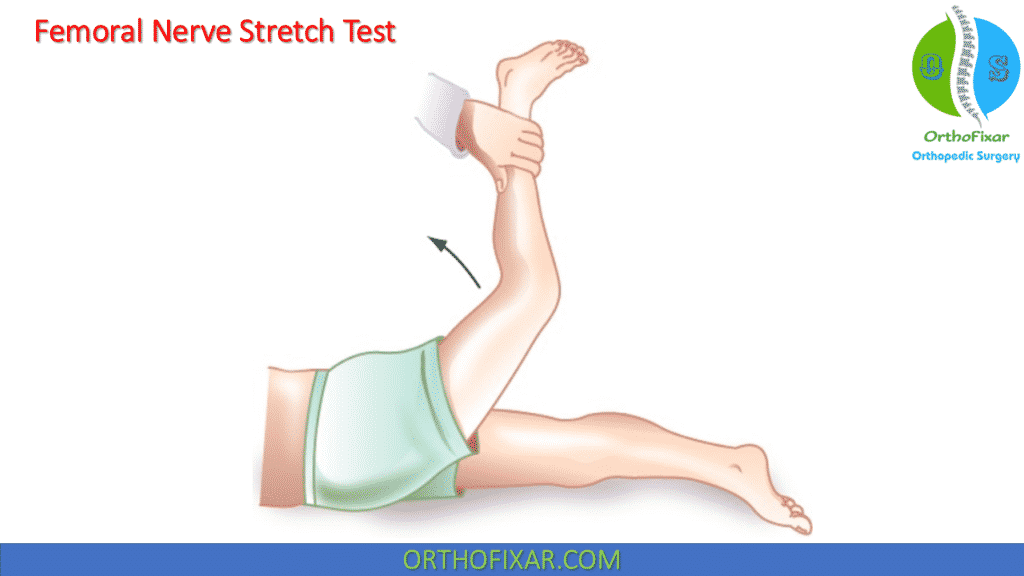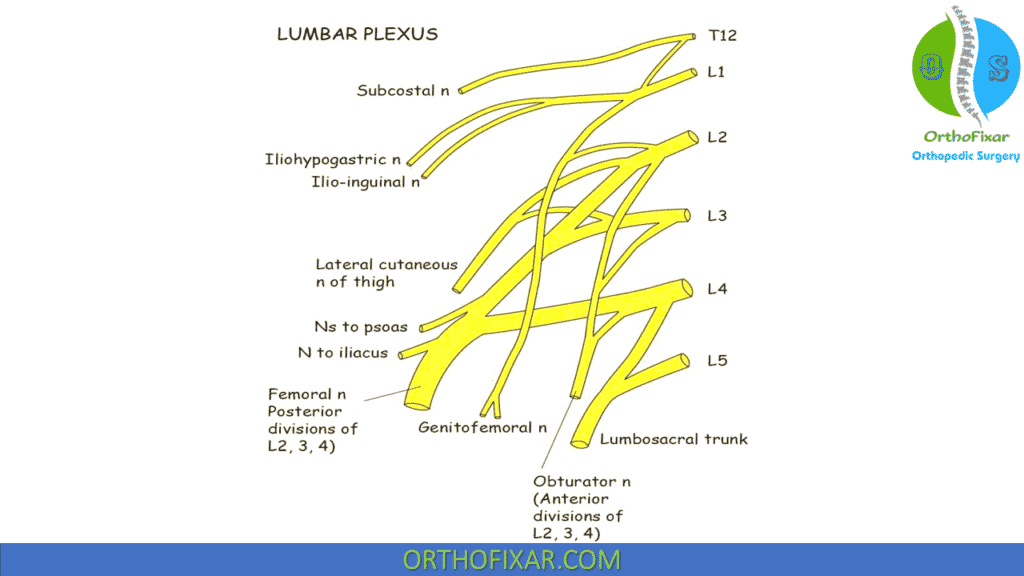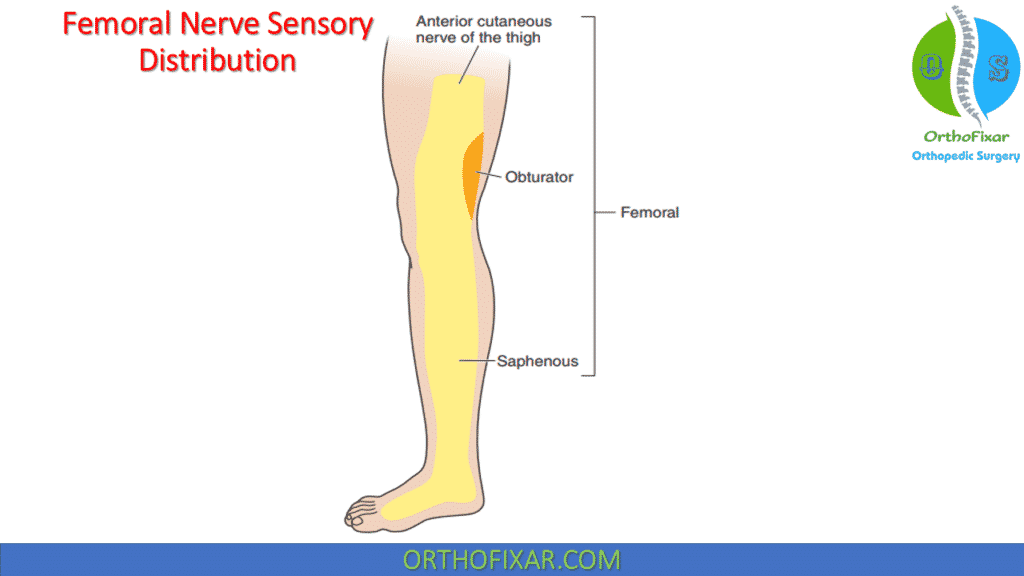Femoral Nerve Stretch Test

Femoral Nerve Stretch Test is a way of eliciting root stretch in the evaluation of high lumbar radiculopathy.
As noted, the straight leg raising test and its variants do not place significant tension on the nerve roots above L5. Although compression of the upper lumbar nerve roots is not common, it does occur. Herniations of the L3–L4 disc commonly compress the L4 nerve root. The femoral nerve stretch test is designed to assess compression of the L2, L3, or L4 nerve roots.
See Also: Lasegue Test
How do you perform the Femoral Nerve Stretch Test?
To perform the femoral nerve stretch test:
- The patient lies prone on the examination table with a pillow under the abdomen,
- the knee is pulled into maximum flexion, or the examiner pulls upward on the extended knee to passively extend the hip.
- In the bent knee pulling test, the patient’s knee is flexed and the examiner pulls upward on the ankle while pushing the buttock forward (in the same way as for eliciting the psoas sign used in the diagnosis of appendicitis).

What does a positive Femoral Nerve Stretch Test mean?
In the normal patient, this maneuver induces only a mild feeling of tightness in the anterior thigh. When one of the nerve roots that contribute to the femoral nerve is compressed, this maneuver reproduces the patient’s radicular pain in the anterior thigh (positive Femoral Nerve Stretch Test).
This test is associated with a high number of false positives due to tight or injured quadriceps. The cross femoral stretch is positive when testing the opposite leg produces symptoms on the involved side.
Accuracy
This test has been shown to be positive in 84–95% of patients with high lumbar disks, although the test may be falsely positive in the presence of an adaptively shortened iliopsoas or rectus femoris or any pathology in or about the hip joint, sacroiliac joint, and lumbar spine.
Notes
The femoral nerve stretch test is probably the single best screening test to evaluate for a high lumbar radiculopathy.
If the patient cannot lie prone, the test can be performed in side-lying with the pelvis stabilized.
The cross femoral stretch is positive when testing the opposite leg produces symptoms on the involved side.
Femoral Nerve Anatomy
The femoral nerve, the largest branch of the lumbar plexus (L2-L4), arises from the lateral border of the psoas just above the inguinal ligament. The nerve descends beneath this ligament to enter the femoral triangle on the lateral side of the femoral artery, where it divides into terminal branches.
Above the inguinal ligament, the femoral nerve supplies the iliopsoas muscle, and, in the thigh, it supplies the sartorius, pectineus, and quadriceps femoris muscles.
The sensory distribution of the femoral nerve includes the anterior and medial surfaces of the thigh via the anterior femoral cutaneous nerve and the medial aspect of the knee, the proximal leg, and articular branches to the knee via the saphenous nerve, the largest cutaneous branch of the femoral nerve.
The saphenous nerve exits from the adductor (Hunter’s, or subsartorial) canal, descends under the sartorius muscle, and then winds around the posterior edge of the sartorius muscle at its tendon portion.


References
- Nadler SF, Malanga GA, Stitik TP, Keswani R, Foye PM. The crossed femoral nerve stretch test to improve diagnostic sensitivity for the high lumbar radiculopathy: 2 case reports. Arch Phys Med Rehabil. 2001 Apr;82(4):522-3. doi: 10.1053/apmr.2001.22343. PMID: 11295015.
- Sarvdeep S. Dhatt, Sharad Prabhakar – Handbook of Clinical Examination in Orthopedics. An Illustrated Guide-Springer Singapore.
- Dutton’s Orthopaedic Examination, Evaluation, And Intervention 3rd Edition.
- AG, Swenson RS. Disorders of the Nervous System: A Primer. New Haven: Dartmouth Medical School, 2004. Retrieved on August 28, 2018.
- Lifetime product updates
- Install on one device
- Lifetime product support
- Lifetime product updates
- Install on one device
- Lifetime product support
- Lifetime product updates
- Install on one device
- Lifetime product support
- Lifetime product updates
- Install on one device
- Lifetime product support